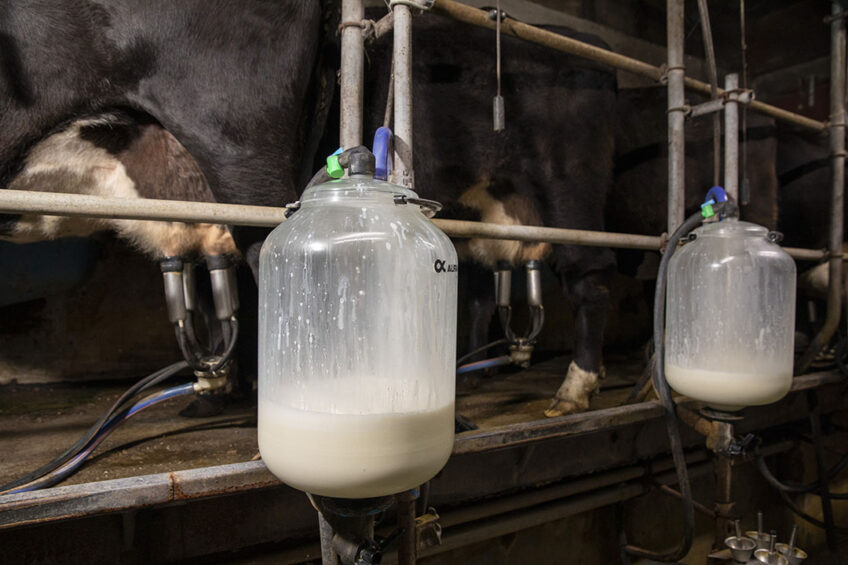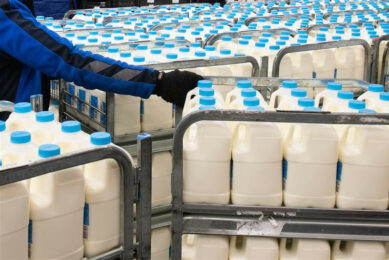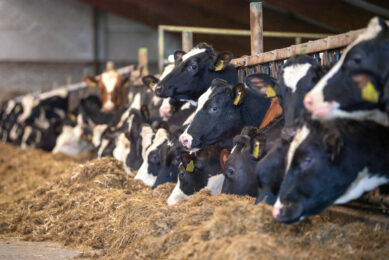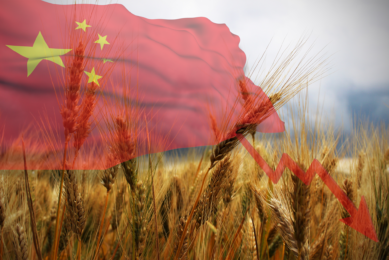Short-term outlook for EU milk and dairy products

EU dairy consumption is set to remain stable this year despite an anticipated small reduction in milk collection.
The EU Short-Term Agriculture Outlook said cow slaughtering is likely to increase responding to declining raw milk prices, though these could be partly compensated by increasing milk yields. Despite a slight decrease in EU milk deliveries (-0.2%), processing availability might still be kept stable thanks to higher milk fat and protein contents.
The cheese and whey processing stream is expected to be favoured by the industry due to EU export potential and relatively stable domestic cheese consumption. Butter and SMP production could decline due to the larger than usual stocks (taken over from 2022), which could partially cover the increase in exports and domestic use.
Overall, the report suggests that EU consumption is expected to face some consumer preference shifts to lower-quality products, impacting the value rather than the total volume.
One of the questions that is being asked across the dairy sector is when there will be a recovery of import demand from China, which could open the doors for EU export growth.
Milk
Despite initial expectations of declining EU milk deliveries in 2022, they remained relatively stable. EU dairy prices have passed their peak with the average EU raw milk prices falling in January after 24 months of uninterrupted growth, reaching €55/100kg in February.
Between September and March, EU butter prices dropped the most (-32%) followed closely by milk powders (SMP down 30%, WMP down 29%, and whey powders down 24%). The decline was less for cheddar (-3%). Compared to the 5-year average of the same week in March, only whey prices are higher.
Developments of butter and SMP prices allow for a calculation of an “EU milk equivalent price” which, with a time lag of 2-3 months, anticipates trends for raw milk prices. The increasing seasonal availability due to the spring production peak in the EU, and existing stocks carried over from last year, are likely to keep dairy prices in a downward trend. The extent of the decline will depend on the development of demand. Export growth has been halted recently by existing stocks in China as well as rising food inflation in the EU and worldwide.
While EU milk deliveries were stable last year, fat and protein contents were lower (-0.4%) and (0.3%), probably due to the hot and dry weather. As a result, the availability of milk solids for processing was reduced.
This year, declining EU raw milk prices are likely to lead to increased slaughtering as feed and other input costs could remain high. The Commission expects the overall EU dairy herd could shrink by 1%. Higher beef prices could incentivise this. The decline in the dairy herd could also be compensated by increasing yields, assuming normal weather patterns return.
Dairy products and China
While dairy demand, apart from in China, remained strong in 2022, there are some regional differences developing. Southeast Asia and MENA countries, particularly Algeria, are showing growth while some other developing nations, especially in Africa, are struggling. The strong US dollar made imports from African countries more expensive, which could make them vulnerable again this year.
Analysts believe that China’s stockpiles over the last few years are now reducing to normal levels. Combined with the removal of the zero-Covid policy and assuming a return of consumer confidence and strength of purchasing power, China could restart its import activity later this year.
Soumya Behera, senior analyst at the Agriculture and Horticulture Development Board, said that historically there had been a strong relationship between China’s economic growth and its level of dairy imports. Imports fell by around 19% in 2022, with falls across all sectors, barring butter.
Behera believes that based on the predicted economic growth of 4.5% for 2023 and 2024, import volumes would be expected to rise by around 6.7% per year, with demand recovering throughout 2023.
Join 13,000+ subscribers
Subscribe to our newsletter to stay updated about all the need-to-know content in the dairy sector, two times a week.










